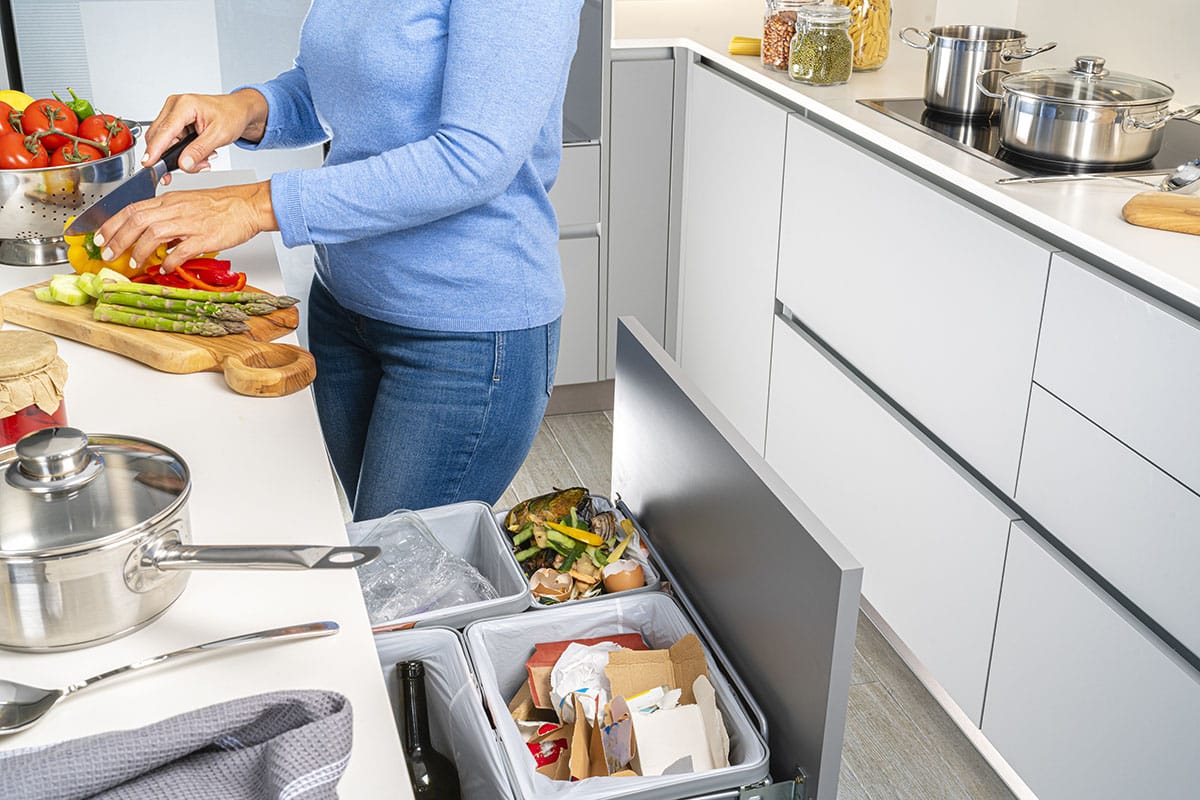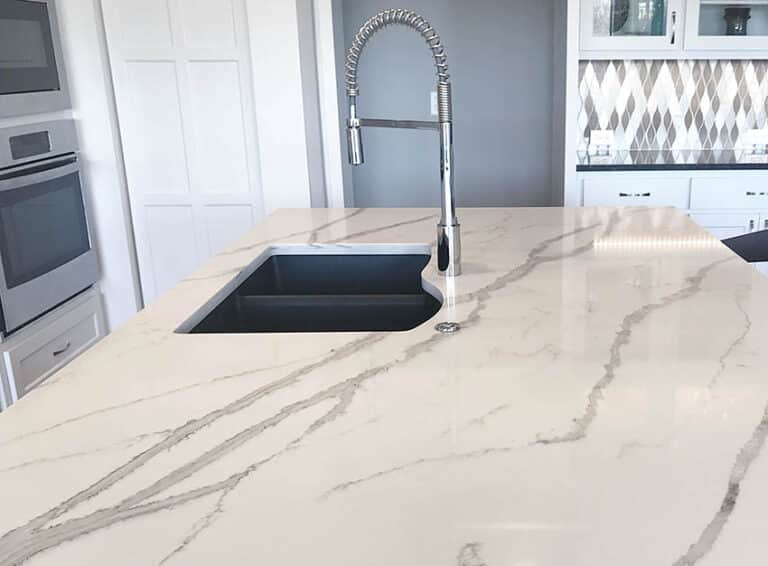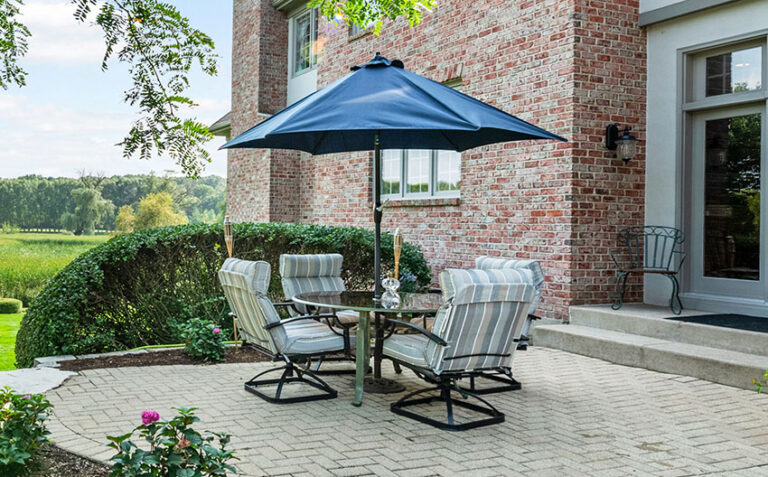Trash Cabinet Dimensions (Comprehensive Guide for Proper Installation)
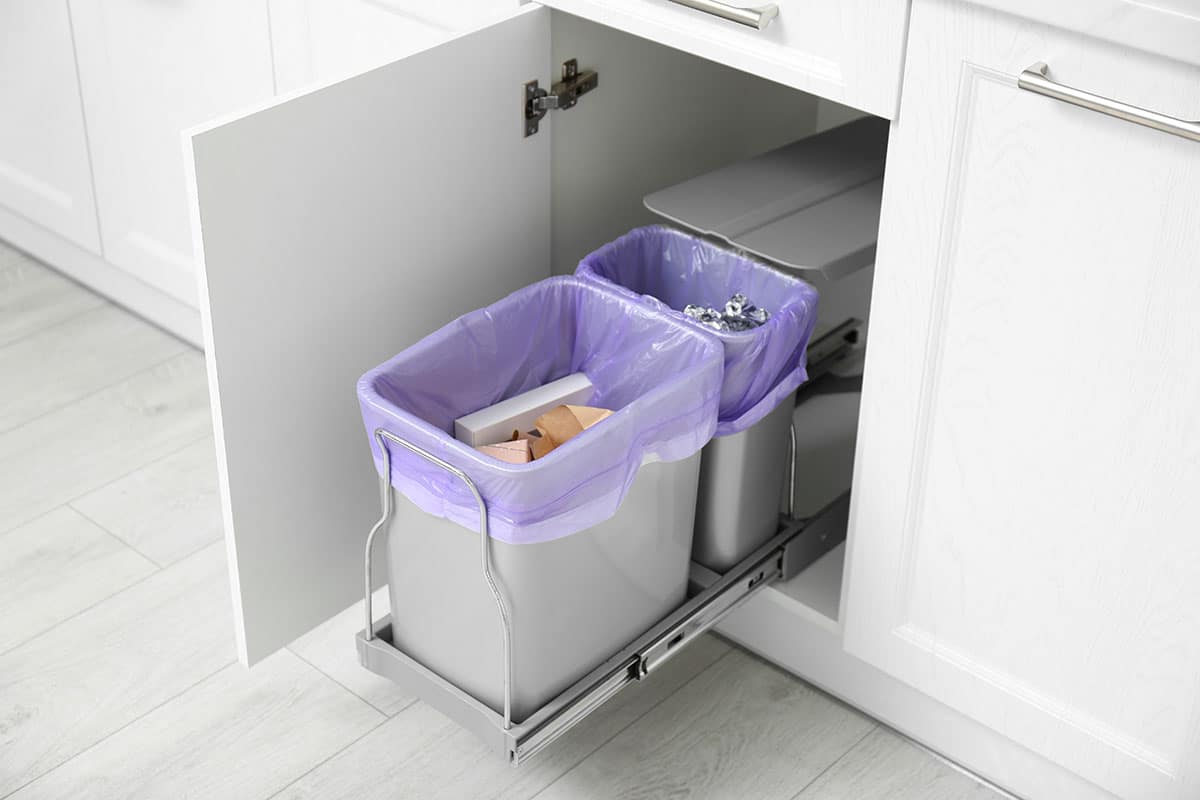
Nobody likes preparing food in a stinky environment, where flies can buzz around and take the joy off of meal preps. While families can buy a container to manage kitchen and other wastes, a more sensible solution is to store these trash cans out of sight. Even whimsically-designed trash bins can be an eyesore. Hence, keeping these items tucked away in an under-sink cabinet or similar furniture makes perfect sense. But what size cabinet should you build, and what should you consider?
Trash Can Cabinet Dimensions
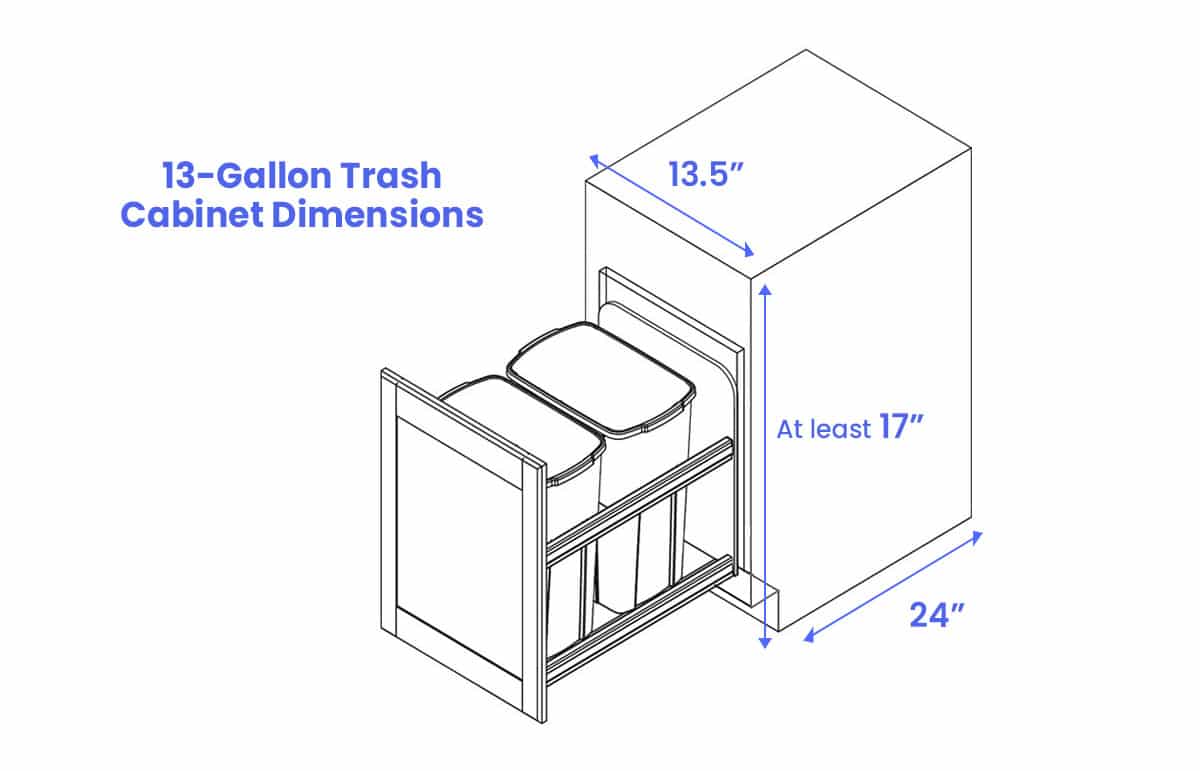
Cabinets are essential furnishings in any building, whether residential, office, academic, industrial, or commercial. These items give any room a more elegant touch while storing objects inside. And that’s what a trash can cabinet does, although one only “stores” waste or garbage temporarily.
Cabinets must be spacious enough to accommodate a predetermined item, such as a trash can. Knowing the correct dimensions requires appreciating the common sizes of waste bins families use in the kitchen.
Most families have a 13-gallon (49-liter) trash can under the kitchen countertop or inside a cabinet. However, it’s not unusual for some households to pick a smaller-sized 12-gallon (45-liter) bin or a larger 16-gallon (57-liter) unit for families with high “garbage” output.
Unfortunately, volume doesn’t always translate to standard dimensions (length x width x height). For example, a bin might appear taller and narrower than another despite both products having a 13-gallon capacity.
Most manufacturers of 13-gallon kitchen garbage bins mold their products to about 17 to 20 inches tall and 13 to 15 inches wide (43-51 x 33-38 centimeters). Hence, the cabinet housing a single 13-gallon waste basket should be at least 17.5 inches (44.5 centimeters) tall and 13.5 inches (34.5 centimeters) wide (notice the half-inch allowance).
It’s also worth pointing out that the can’s design can influence cabinet dimensions. An open-top 13-gallon unit might be okay with an 18-inch (46-centimeter) by 14-inch (36-centimeter) measurement, but a bin with a flip-top lid might not. The can’s cover might hit the cabinet’s ceiling, preventing you from opening it.
In that case, you will want to measure your cabinet’s dimensions (including the interior space) to determine a suitable garbage can size.
How Wide Does a Garbage Drawer Need to Be?
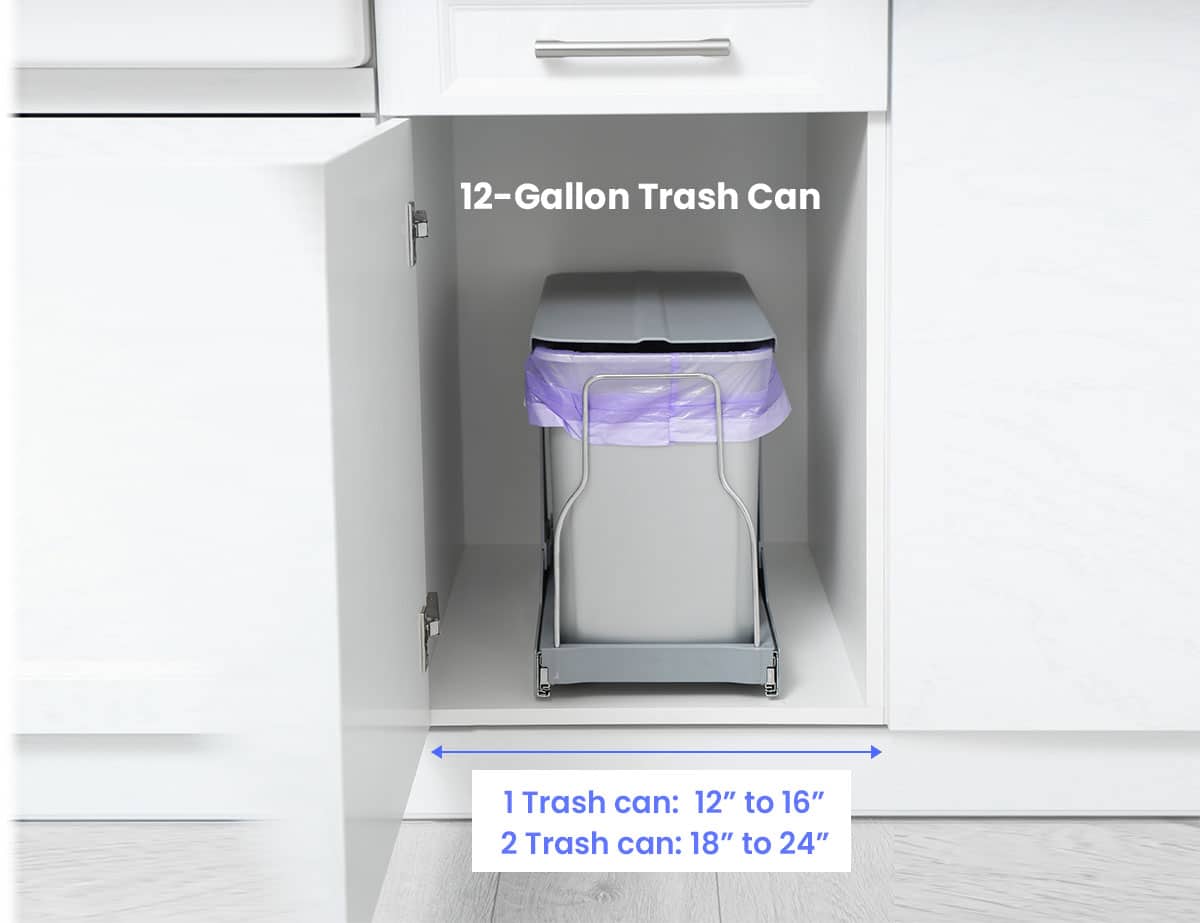
Garbage drawers make excellent alternatives to cabinets, allowing for effortless pullouts. So, how broad should this furnishing be?
Most contractors recommend a garbage drawer as narrow as 14 inches (35.5 centimeters) or as broad as two feet (61 centimeters) between the gas range and kitchen sink.
A small 12-gallon trash can should fit nicely in a 12- to 16-inch-wide (31 to 41 centimeters) garbage drawer, provided you position the bin’s narrow section at the front. Meanwhile, an 18- to 24-inch-wide (46 to 61 centimeters) unit should accommodate a pair of bins. For proper placement, you can orient them one by one, fronting the other or side by side.
What is the Depth of a Garbage Cabinet?
A garbage cabinet’s front-to-back measurement reflects the standard (depth) dimensions. We can safely assume that a 24-inch-deep (61 centimeters) garbage cabinet isn’t farfetched.
You might want to measure your cabinet’s depth as a reference when buying a waste drawer or unit. Most manufacturers offer 24-inch (61 centimeters) models, while a few might provide 18-inch (46 centimeters) versions. You might also be lucky to find brands willing to customize the garbage bin’s depth.
Everything will hinge on your kitchen’s existing layout, any components inside, and other factors worth considering.
Tilt Out Trash Cupboard Dimensions
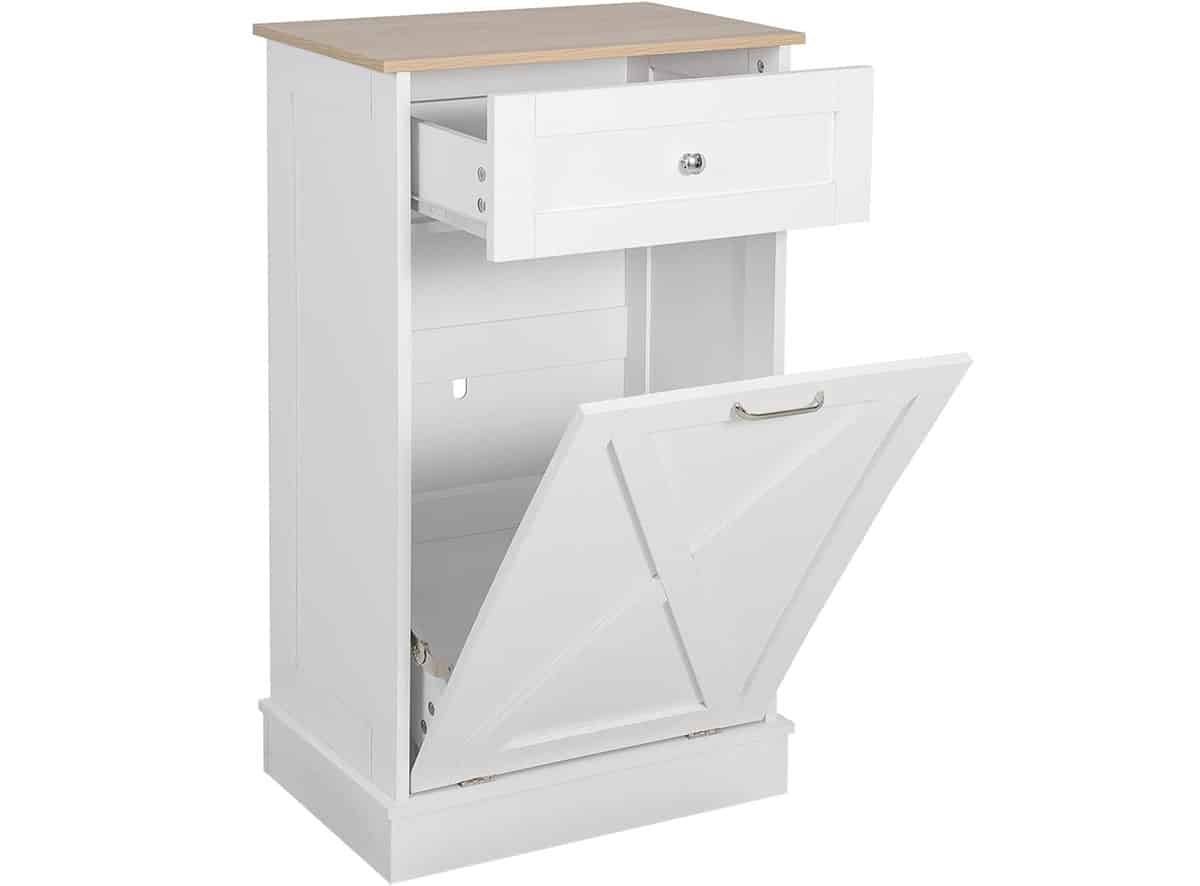
Like any garbage can-concealing platform, a tilt-out trash cupboard’s dimensions hinge on the waste basket’s size. Of course, some companies manufacture these furnishings with interior bins, allowing homeowners to place the contraption anywhere in the kitchen.
Customization is high among tilt-out variants. Moreover, some homeowners prefer building a tilt-out trash cupboard from scratch to save costs and create a compartment more specific to their waste baskets.
Hence, dimensions vary across homes, depending on needs and preferences. However, families who want a hassle-free tilt-out cupboard solution might consider a readily available unit.
For example, a tilt-out measuring 18 inches (46 centimeters) side-to-side, 15 inches (38 centimeters) front-to-back, and 36 inches (91 centimeters) top-to-bottom should accommodate a single-bin system for small families (or households with minimal waste). On the other hand, extending the side-to-side measurement from 18 inches to 41 inches (1.04 meters) should empower families to add another garbage bin to the tilt-out.
Double Trash Cabinet Sizes
Medium to large households can accumulate kitchen waste quickly, making a single-bin garbage system inadequate. Adding another container to accommodate waste should address such concerns. But what sizes do double trash cabinets come in?
Like tilt-out cupboards and pullout cabinets, double-bin systems vary in size. For example, a double garbage can platform measuring 16.5 inches (42 centimeters) wide, 18 inches (46 centimeters) high, and 21 inches (53 centimeters) deep requires a unit with the following minimum measurements: 18 inches (48 centimeters) wide, 19 inches (48.25 centimeters) high, and 22 inches (56 centimeters) deep.
The size depends on the garbage bin’s measurements. Homeowners can double the garbage can’s width or depth to determine the minimum dimensions. Adding an inch allowance on all sides should ensure you can easily access the garbage baskets.
Where Should a Cabinet for Trash Go in the Kitchen?
Garbage bins are indispensable tools for handling waste. These housing trash cans should be accessible for everyone working in the kitchen. But where?
Experts recommend placing a cabinet for waste adjacent to the sink and within arm’s reach of the food prep area. You will want to toss empty tin cans, bottles, sachets, peelings, and other raw food wastes without walking to a kitchen corner.
The garbage cabinet or compactor should also be next to the dishwasher. This arrangement allows you to scrape large food bits off plates and bowls before rinsing and dumping them into the machine for washing and sanitation. You can also place the garbage under the kitchen sink if space is an issue.
References Standard Measurements https://tantrumsandtools.com/what-size-is-a-kitchen-trash-can-ultimate-size-guide/How Wide Does a Drawer Need to be? https://stonehavenlife.com/design-tips-for-your-kitchen-trash-pullout/ What is the Depth? https://www.houzz.com/discussions/2884600/18-depth-pull-out-trash-drawer

